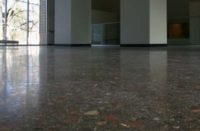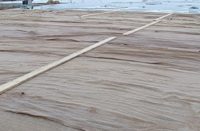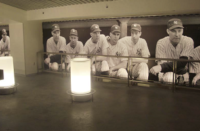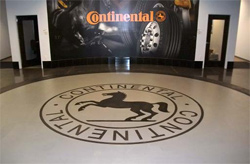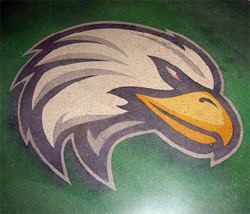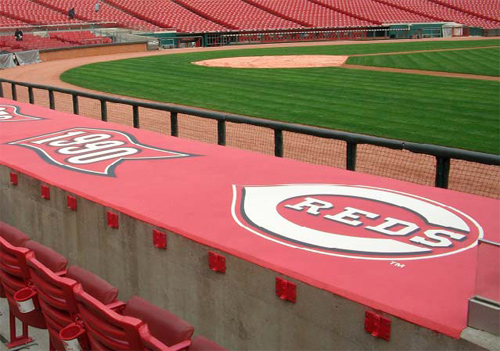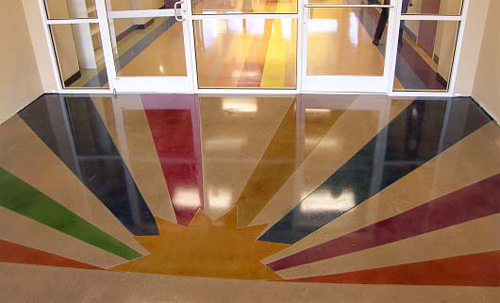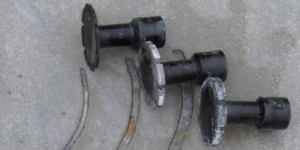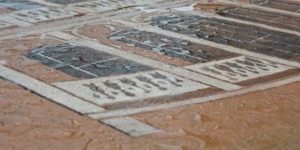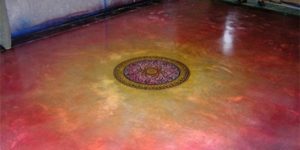Back in November 2004, David Stephenson got a phone call that changed his decorative concrete business forever. Stephenson was one of the three owners of American Concrete Concepts Inc., an outfit in Springdale, Ark., and the man on the other end of the line was a general-contractor friend of his. “My customer saw this floor at a vineyard in Southern California,” the contractor told Stephenson. “He doesn’t know what it is and doesn’t care how much it costs, but he wants this floor for his building.”
The call turned into Stephenson’s very first polished concrete job. “We charged $12 a foot for that project,” he says. “We still lost money, but the job paid for the polishing equipment – an HTC machine, edge grinder and vacuum.”
That single job set the course for Stephenson’s company, which now does 95 percent polished concrete and “has better than doubled its size every year since we’ve been in business.” That’s about six years worth of doubling since American Concrete Concepts started taking jobs in early 2003.
 Stephenson, along with Les Davis, Rushard Hudson and Garrison Wynn, formed the company with $10,000. After a week’s training in Ogden, Utah, with Concrete Coatings Inc., they set out to capitalize on the booming residential construction market in northwest Arkansas. Several Fortune 100 companies have their headquarters in the area, says Stephenson, so there was lots of high-end residential work. But after about six months focusing on residential, they decided to start making the switch to commercial construction. Despite the high volume of work, there were two major problems with the residential market. “Residential contractors will go with the cheapest concrete guy, and housewives are very picky,” Stephenson says. “The combination of the two was very tricky.”
Stephenson, along with Les Davis, Rushard Hudson and Garrison Wynn, formed the company with $10,000. After a week’s training in Ogden, Utah, with Concrete Coatings Inc., they set out to capitalize on the booming residential construction market in northwest Arkansas. Several Fortune 100 companies have their headquarters in the area, says Stephenson, so there was lots of high-end residential work. But after about six months focusing on residential, they decided to start making the switch to commercial construction. Despite the high volume of work, there were two major problems with the residential market. “Residential contractors will go with the cheapest concrete guy, and housewives are very picky,” Stephenson says. “The combination of the two was very tricky.”
By the time that fateful phone call came in, American was pretty well established in the commercial market, and they were up for a challenge. That very first polished job was a polished floor with acid stain, a combination that they figured out pretty quickly wasn’t ideal. The two techniques are fundamentally at odds – polishing seeks to achieve a perfectly flat, smooth surface, while the chemical processes of acid stains erode that same surface. Stephenson and his partners (Davis, plus newcomer Clint Howle – co-founders Wynn and Hudson had already left the company) were determined to find an alternative that could bring the same range and variety of colors to their polished surfaces without having to rely on acid stains.
So they began to experiment with India ink and different types of dye before eventually hiring a chemist to help them develop AmeriPolish, a solvent-based dye system designed especially for polished concrete. AmeriPolish really changed things for polished concrete, says Stephenson, taking it from a largely industrial application to an architectural, design-friendly finish.
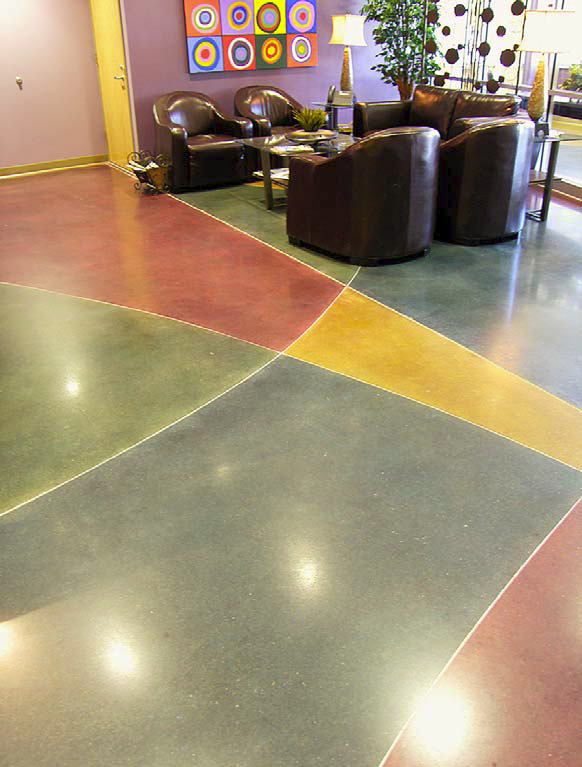 AmeriPolish proved popular, and prompted Stephenson and his partners to start American Decorative Concrete Supply. In 2005, ADCS brought AmeriPolish to World of Concrete, and the owners were excited to see how warmly it was received.
AmeriPolish proved popular, and prompted Stephenson and his partners to start American Decorative Concrete Supply. In 2005, ADCS brought AmeriPolish to World of Concrete, and the owners were excited to see how warmly it was received.
Stephenson says that at first, having an integrated installation and supply company was beneficial. Who better to give customer support on a product than guys who were using it on job sites every day? But “the way you run an installation company and the way you run a supply company ¦ the goals and focus are different,” he says. So in early 2007, Stephenson bought Howle and Davis out of American, and they bought him out of ADCS.
Stephenson says it’s the installations he likes best – which seems to be working out pretty well. “We got to know presidents and tech guys from a lot of the big manufacturers,” he says, due to the industry’s curiosity about AmeriPolish.
Stephenson, with yet another new co-owner as of 2008 – Brent Schmiegelow – pulled in several million dollars in revenue this year, a pretty good return on that original $10,000.
American now operates two offices: their headquarters in Springdale, Ark. and a satellite office in the Dallas area. Although they generally stick to jobs in Arkansas, Missouri, Oklahoma, Texas, Louisiana and Mississippi, they occasionally make exceptions for jobs farther afield. Stephenson says that expanding his management team to accommodate the company’s growth has been key to keeping things running smoothly. In addition to Stephenson and Schmiegelow, the in-house staff includes an operations manager, an office manager, a quality control and training manager, six independent sales reps and a full-time mechanic (American Concrete operates several mid-duty and box trucks and a small fleet of four-wheelers). All of that, plus a field crew that fluctuates between 30 and 45, adds up to a pretty sizable operation.
But size isn’t the only thing American Concrete has going for it. As he’s grown the company, Stephenson has learned to be very resourceful. One of the best growth tools, says Stephenson, has been taking advantage of educational opportunities – not just getting his crews trained, but also teaching classes themselves. Stephenson personally teaches six to eight classes at architecture firms every month, and the company as a whole does 10 to 15. These lunch-and-learns are not your average sales-pitch sessions. Rather than focusing on what American Concrete in particular has to offer, Stephenson says the focus is always on the process. The courses illustrate polished concrete’s strengths (durability, design options, LEED contributions) but also its weaknesses. (Many architects are looking for a perfect floor, says Stephenson, but “this is concrete – it’s guaranteed to do two things: be hard and crack.”)
Stephenson’s business savvy has been crucial to the company’s development, but their success still comes down to craftsmanship. “We do really good work, and we take advantage of the fact that we know how to do a lot,” Stephenson says. “You name it, we’ve pretty much done it at this point.”
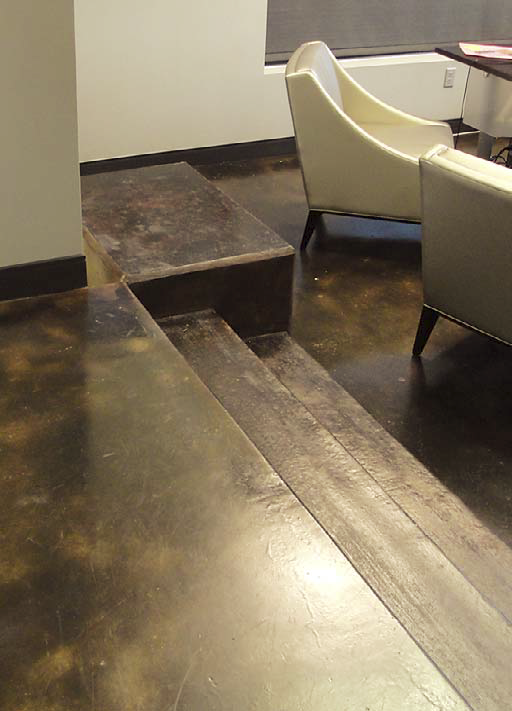 That breadth of experience has yielded a very reliable formula for growth, says Stephenson, and the base of that growth has been schools and universities. Making up fully half of the jobs that American Concrete takes on, educational institutions are prime candidates for polished concrete, as it compares very favorably (particularly when it comes to maintenance costs) with the other two most common school floorings, terrazzo and vinyl composition tiles. For the other half of American Concrete’s business, around 15 percent is work for sports stadiums, such as the Cincinnati Reds baseball stadium (featured in Concrete Decor’s September/October 2008 issue) and the Indianapolis Colts stadium. Another 15 percent is retail, including work for Wal-Marts, Sam’s Clubs, Dollar General stores, Mills Corp. malls and several supermarket chains. Ten percent is offices and churches, and the final 10 falls to repairs, prep and other miscellany.
That breadth of experience has yielded a very reliable formula for growth, says Stephenson, and the base of that growth has been schools and universities. Making up fully half of the jobs that American Concrete takes on, educational institutions are prime candidates for polished concrete, as it compares very favorably (particularly when it comes to maintenance costs) with the other two most common school floorings, terrazzo and vinyl composition tiles. For the other half of American Concrete’s business, around 15 percent is work for sports stadiums, such as the Cincinnati Reds baseball stadium (featured in Concrete Decor’s September/October 2008 issue) and the Indianapolis Colts stadium. Another 15 percent is retail, including work for Wal-Marts, Sam’s Clubs, Dollar General stores, Mills Corp. malls and several supermarket chains. Ten percent is offices and churches, and the final 10 falls to repairs, prep and other miscellany.
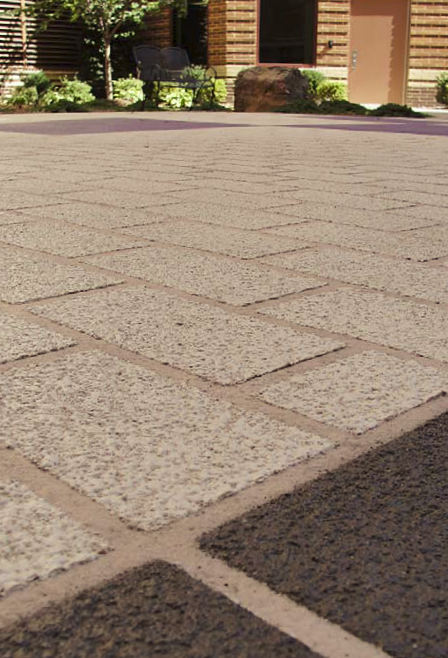 “The good thing about this mix is that the foundation is very stable,” he says. “Schools and universities will always be building and remodeling.”
“The good thing about this mix is that the foundation is very stable,” he says. “Schools and universities will always be building and remodeling.”
To accommodate their job mix, American has had to strike a healthy balance between quality and quantity. “We are skilled enough to do the decorative work, but big enough to do extremely large projects,” says Stephenson.
And that’s a balance they’ve had to find and refine pretty much on their own. “Polished is still very young,” says Stephenson. “There are a lot of bugs to work out, and not a lot of great models.” But in the five years since that first polished floor, Stephenson and his crew have picked up quite a few tricks.
Managing a client’s expectations is important on any job, and American Concrete’s method for ensuring client satisfaction is simple. Each job begins with a 10-by-10 sample. “Every time, no matter what, the very, very first thing, we do a sample. A real sample,” he says. “It’s as much for us as it is for them, so we know, Are we going to be able to get exactly what they want?”
Stephenson’s other rule may come as a surprise to other polished contractors. “Everybody teaches you: Go dry, go dry,” he says. “95 percent of the time, if you run into a problem on the slab – scratches, scuffs and so on – you add water, and they go away.”
With their experience and unique perspective on polished concrete, it’s no wonder American Concrete Concepts has done well. And you can bet the company will continue to be leaders in the field.
www.acci-us.com
